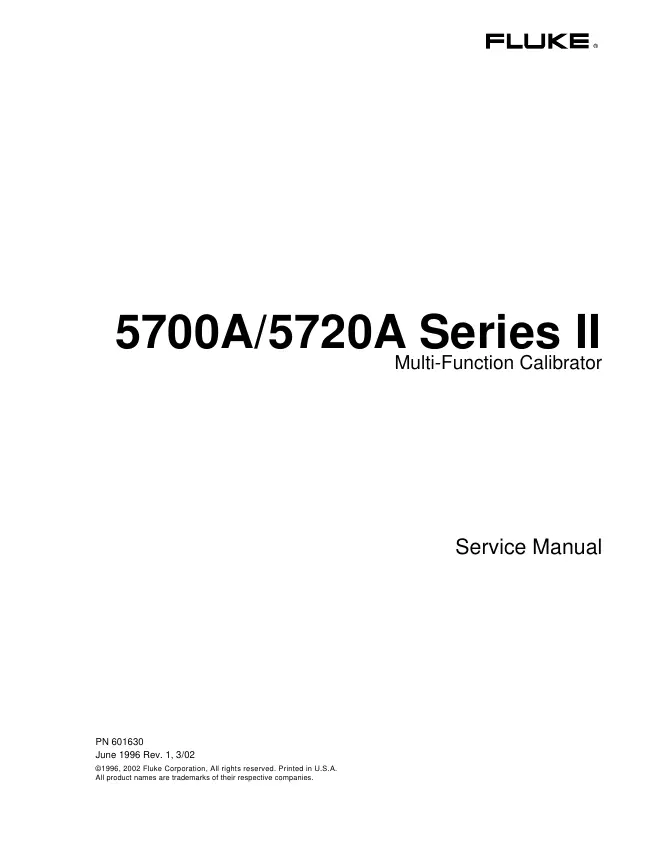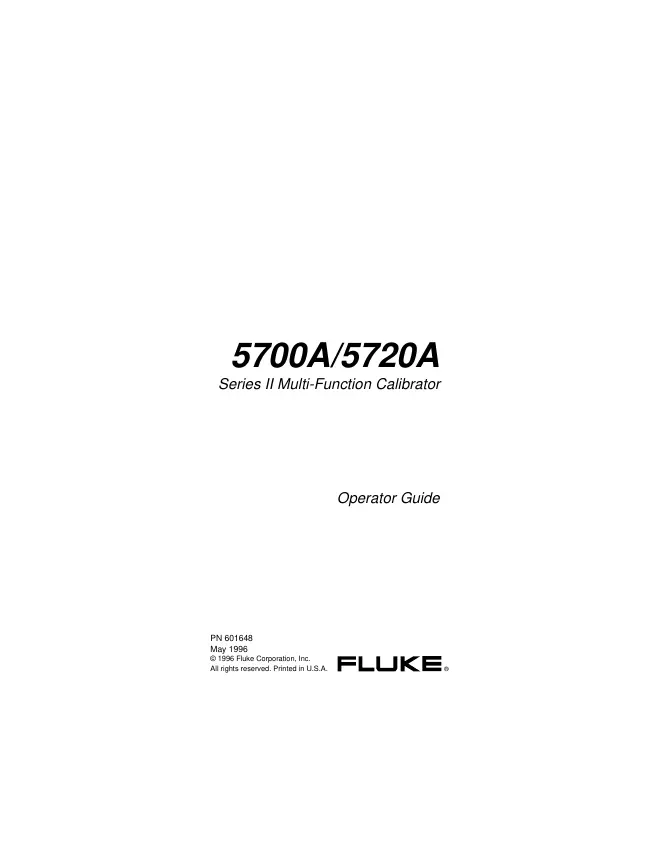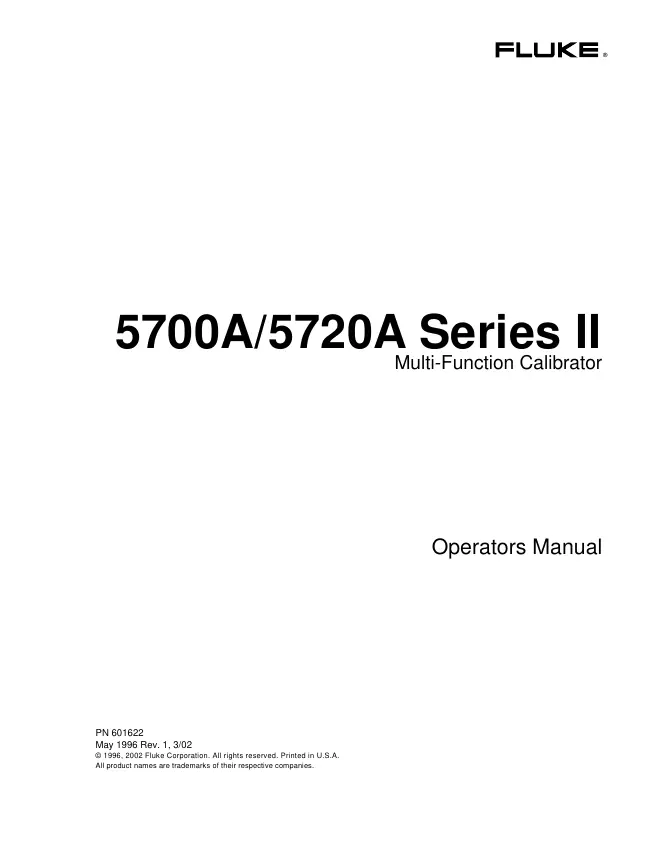Fluke - 5720A Series II - Calibrator
Manufacturer:
No picture available!
Maybe you can
upload a pic
for the
Fluke 5720A Series II ?
If you have any other manuals for the
Fluke 5720A Series II
you can
upload the files here.
.
Equipment:
5720A Series II
Date:
1996
Category:
Group:
Sub Group:
Information
The
Fluke Model 5700A/5720A Series II calibrators are
precise instruments that
calibrate a wide variety of electrical measuring
instruments. These calibrators maintain
high accuracy over a wide ambient temperature range,
allowing them to test instruments
in any environment, eliminating the restrictions to
calibrate only in a temperaturecontrolled
standards laboratory. With a 5700A/5720A Series II, you can
calibrate
precision multimeters that measure ac or dc voltage, ac or
dc current, and resistance. The
5720A Series II operates in a similar manner to the 5700A
Series II, the difference is that
the
5720A Series II has a considerably higher specified
accuracy. Option 5700A-03
Wideband AC Voltage, which is available for both the 5700A
Series II and the 5720A
Series II, extends this workload to include rf voltmeters.
Specifications are provided at the end of this chapter. The
calibrator is a fully programmable
precision source of the following:
· DC voltage to 1100V
· AC voltage to 1100V, with output available from 10 Hz to
1.2 MHz.
· AC and DC current to 2.2A, with output available from 10
Hz to 10 kHz
· Resistance in values of 1x10n and 1.9x10n from 1W to 100
MW, plus a short.
· Optional wideband ac voltage from 300 μV to 3.5V into 50W
(-57 dBm to
+24 dBm), 10 Hz to 30 MHz.
Features of the calibrator include the following:
· Internal environmentally-controlled references allowing
the calibrator to maintain
full performance over a wide ambient temperature range.
· Automatic meter error calculation obtained through using a
simple output adjust
knob; the display shows linearity, offset, and scale errors.
· Keys that multiply and divide the output value by 10 to
simplify work on meters
with calibration points at decade multiples of a fraction of
full-scale.
· Programmable entry limits used for restricting the levels
that can be keyed into the
calibrator, preventing access to levels that may be harmful
to equipment or
personnel.
· A s key that provides the capability of displaying the
instrument’s specification at
the selected operating point, calibration interval, and
specification confidence level.
· An auxiliary current binding post that allows you to
calibrate meters with separate
current inputs without moving cables.
· Real-time clock and calendar for date stamping reports.
· Offset and scaling modes that simplify linearity testing
of multimeters.
· Variable phase reference signal output and phase-lock input.
·
Interface for the
Fluke 5725 Amplifier.
· Standard IEEE-488 (GPIB) interface, complying with
ANSI/IEEE Standards 488.1-
1987 and 488.2-1987.
· Selectable normal remote mode or emulation of the Fluke
5100B and
5200A Series
calibrators in functions and response to system controller
software
· EIA Standard RS-232C serial data interface for printing,
displaying, or transferring
internally-stored calibration constants, and for remote
control of the calibrator.
Service manual
Manual type:
Service manual
Pages:
570
Size:
38.0 MB
Language:
english
Revision:
1
Manual-ID:
PN 601630
Date:
Quality:
Electronic document, no scan, very well readable.
Upload date:
Nov. 30, 2014
MD5:
54fe8d2e-d587-005d-4935-802b448ca82e
Downloads:
1695
User manual
Manual type:
User manual
Pages:
40
Size:
237.9 KB
Language:
english
Revision:
Manual-ID:
601648
Date:
Quality:
Scanned document, all readable.
Upload date:
Feb. 6, 2016
MD5:
939164dd-983a-5da4-5de3-1d61ac91d41d
Downloads:
822
User manual
Manual type:
User manual
Pages:
326
Size:
2.2 MB
Language:
english
Revision:
1
Manual-ID:
601622
Date:
Quality:
Scanned document, all readable.
Upload date:
Feb. 6, 2016
MD5:
f0b336c8-d958-e93c-1f11-77b438195ea6
Downloads:
886


